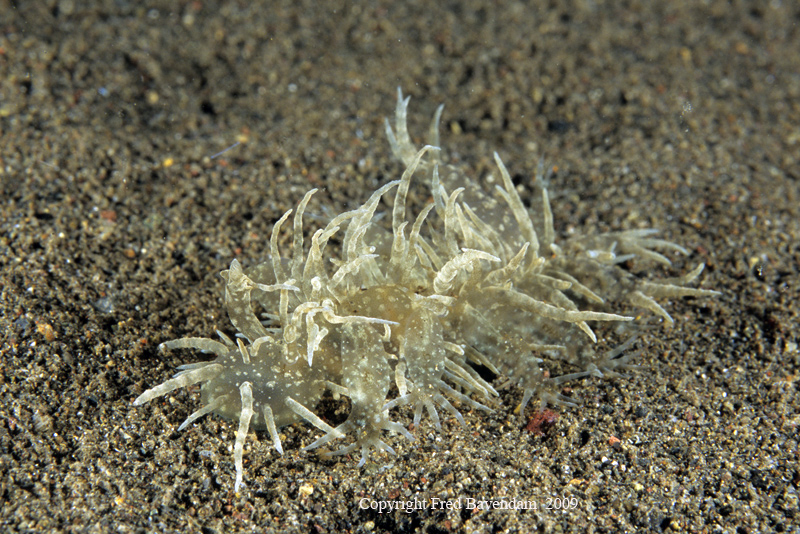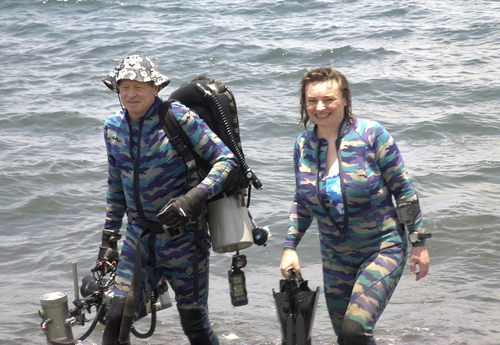 |
Melibe megaceras
Image courtesy of Fred BavendamIndonesia
Well, we haven't seen this guy in awhile but thanks to Fred Bavendam we are able to see it on the site this week. This is probably because it is so cryptic against a sandy bottom. This species can be almost transparent. That combined with its sandy patches, makes it almost invisible at times.
M. megaceras can be easily distinguished (if you can find one) by its long inflated cerata with 2-4 elongate papillae at the very tip. The other key character is a long, flag-like, papilla on the posterior surface of the rhinophores.
Not a small nudibranch, it reaches 40 mm in length. Like other Melibe , it feeds by casting its large oral hood, capturing small crustacean and even larval fish.
The current known geographical range includes: Dubai (UAE) to Australia, Indonesia, Malaysia and the Hawai'ian Islands.
Good show Fred.
Gig Harbor, Washington
Dec., 2009
Fred and Pat emerge from water after
dive at Puri Jati, Bali, Indonesia, Oct. 2003
 |
Fred Bavendam is an American with a passion for marine animals and photography. After growing up in Ohio, he attended the University of New Hampshire from which he graduated with majors in art and zoology. He spent the next few years working as a commercial photographer. At the age of 28, Fred took an introductory scuba course and began diving and taking underwater pictures as a hobby. Over time, the hobby became an obsession until he abandoned commercial photography to devote all his efforts to underwater photography in 1985. Fred's goal, as he takes each picture, is to capture the essence that makes each animal a unique being and the behaviors that allow it to survive in a hungry ocean. He likes nothing more than to take a diver (or even several divers) along with him to follow, observe and photograph a single animal. As a result, his pictures are highly sought after and have been published in many of the world's top magazines. Fred's definitive photo essays about manatees, the giant octopus, crinoids and frogfishes were each published in National Geographic, Geo Germany and Geo France. Additional stories on cuttlefish, nudibranchs, sea stars, monkfish and marine animal behavior have appeared in many other magazines such as Figaro, Terre Sauvage, Airone, International Wildlife, Smithsonian, Newton and Quark . He has also won several BBC Wildlife Photographer of the Year contests.
Send Fred email at fbavendam@hotmail.com |

|
